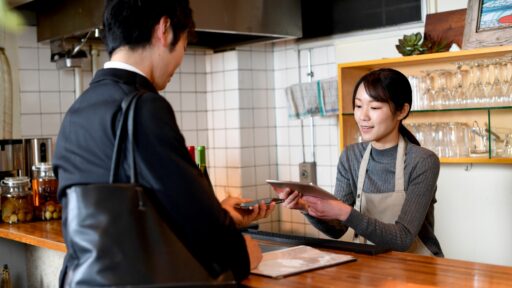Night Vibes Hong Kong Are Temple Street Night Market merchants satisfied?

In order to stimulate public consumption and attract tourists, the government has launched a number of bailout measures since last year, the most eye-catching obviously is “Night Vibes Hong Kong”. In addition to organizing various evening activities, the government also encourages businesses to support it. Suddenly everywhere were “night vibes”, which really gave people a feeling of being overwhelmed. As for the most discussed one, it must be the “Temple Street: One Street with endless authentic encounters” night market, a 100 meters section with 30 food stalls, including 22 specialty food stalls and 10 nostalgic snack mobile stalls. Can it really create the vibe and bring revenue to the merchants?
Entering Temple Street from Yau Ma Tei, in addition to seeing the tourists “check in” spot – a luminous art installation, there are also the usual Temple Street stalls along the road, including magnet stickers, souvenir T-shirts, toys, replica handbags, etc. They don’t seem very attractive, and even tourists are not very interested. It seems that the government mainly care about the gourmet night market, but without improving the quality of the surrounding environment, It is doubtful whether the gourmet night market has such charm to attract tourists to come here.
Local specialty street food
Passing through these stalls and arriving at Nanjing Street, this is where the Temple street gourment night market is at, within the length of a street, there are densely packed stalls on both sides, this is a rare sight of crowded people in recent years. Taking a closer look at the stall contents, they are all delicacies that Hong Kong people are familiar with, such as deep fried crispy pig intestines, beef entrails, fish ball, beef skewer, snake soup, grilled oyster, Mochi and Turkey coffee etc. It’s not special to locals, maybe tourists will find it more attractive.
In terms of food quality, they are in decent standard theoretically, because about 70% of the stalls come from merchants in Temple Street (of course this is one of the reasons why there is less novelty). However, due to the large flow of people, some stalls may need to shorten cooking time, and they cannot use flame cooking, as a result, “Wok Hei” is lacking or not warm enough, which affects the food quality. Another thing that everyone is more concerned about is the price, after the hot topic of “20 dollar 4 pieces” siu mai sold at K11 Waterfront Night Market, the prices at Temple Street Night Market are relatively reasonable, but if the price is the same as or slightly higher than the restaurants outside, why would people want to make a special trip to visit?
Food are not “cheap, nice, good” enough
As a local citizen, it is inevitable to be attracted by news or introductions from KOL to come here, but from the author’s perspective, I may not want to visit again. Firstly the food are not that special; secondly the price is not very competitive. After all, the most important thing about the food in night market is “cheap, nice, good” in deal, however, Temple Street Night Market has not yet been able to meet this requirement. Thirdly there is lack of vibe, because the stalls are formed in a short period of time, there aren’t many touching backgroud story behind it, so it won’t make people feel too excited. Hkers could of go back to Kwai Fong Plaza, Mong Kok center and Sai Wan Ho Tai On Building, even tourists can use Instagram, Xiaohongshu and other social media to find good food and drinks themselves, with more variety and better quality, that could feel the lively atmosphere even more.
On the other hand, night markets in Taiwan and Thailand are very successful. First of all, there are enough stalls, enough food variety that provides tourists with many choices; in addition, their night markets will not only attract tourists, but they also focus on serving locals, that’s why they have to be creative, while maintaining quality and affordable prices, so they can retain their customers; even if there are tourism slump, they can still rely on local customers to support their business. In fact, night markets in Taiwan and Thailand have been around for a long time, thanks to the efforts of the merchants and government, they become mature and successful, such as allowing flame cooking and supply of clean water, sanitary conditions have also improved. Together with the interesting business district nearby, their night markets can attract many people to shop and eat, forming a half-day trip for visitors. Temple Street Night Market does not have these factors, so it is not as attractive.

Difficult to help merchant out if night market is unable to develop in the long run
Other than Temple street night market, from Jan 25 to Feb 16, Kwun Tong also have a event call “Year of Dragon Kwun Tong Night Bazaar”, the author also went there on purpose. It actually feels pretty good, the stalls are divided into several rows, the passage is spacious enough, feels like a smaller version of Bangkok Train Night Market, which give the nearby residents a feel of freshness. However, whether it is Temple Street or Kwun Tong Night Market, if it cannot continue to develop in the long run, or merchants just want to attract customers back to their restaurants, then the organizers need to consider how to improve the positioning of the existing night markets, such as the surrounding support, types of food, price, publicity and quality control. Otherwise these night markets will just become an image project and difficult to truly help merchants to improve their business difficulties.



